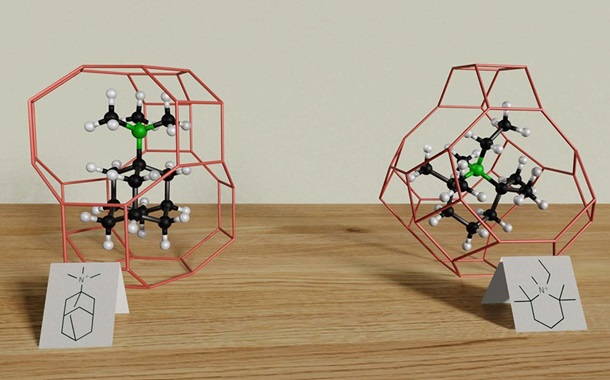IoT Attacks Detection Using Supervised Machine Learning Techniques
Downloads
Doi:10.28991/HIJ-2024-05-03-01
Full Text:PDF
Downloads
Statista. (2024). IoT connected devices worldwide 2019-2030. Statistics, Hamburg, Germany. Available online: https://www.statista.com/statistics/1183457/iot-connected-devices-worldwide (accessed on May 2024).
Bonaccorsi, M., Betti, S., Rateni, G., Esposito, D., Brischetto, A., Marseglia, M., Dario, P., & Cavallo, F. (2017). ‘HighChest': An augmented freezer designed for smart food management and promotion of eco-efficient behaviour. Sensors (Switzerland), 17(6), 1357. doi:10.3390/s17061357.
Aljabri, M., Aljameel, S. S., Mohammad, R. M. A., Almotiri, S. H., Mirza, S., Anis, F. M., Aboulnour, M., Alomari, D. M., Alhamed, D. H., & Altamimi, H. S. (2021). Intelligent techniques for detecting network attacks: Review and research directions. Sensors, 21(21). doi:10.3390/s21217070.
Arnaldo, I., Cuesta-Infante, A., Arun, A., Lam, M., Bassias, C., & Veeramachaneni, K. (2017). Learning representations for log data in cybersecurity. In S. D. Shlomi & Lodha (Eds.), Lecture Notes in Computer Science (including subseries Lecture Notes in Artificial Intelligence and Lecture Notes in Bioinformatics): Springer International Publishing, Vol. 10332 LNCS, 250–268. doi:10.1007/978-3-319-60080-2_19.
Hammood, B. A. K., & Sadiq, A. T. (2023). Ensemble machine learning approach for IoT intrusion detection systems. Iraqi Journal for Computers and Informatics, 49(2), 93-99.
Loganathan, G., Samarabandu, J., & Wang, X. (2018). Sequence to Sequence Pattern Learning Algorithm for Real-Time Anomaly Detection in Network Traffic. Canadian Conference on Electrical and Computer Engineering, 2018-May, 1–4. doi:10.1109/CCECE.2018.8447597.
Lambert II, G. M. (2017). Security analytics: Using deep learning to detect cyber-attacks. UNF Graduate Theses and Dissertations University of North Florida, Florida, United States. Available online: https://digitalcommons.unf.edu/etd/728/ (accessed on May 2024).
Stevanovic, M., & Pedersen, J. M. (2016). Detecting bots using multi-level traffic analysis. International Journal on Cyber Situational Awareness, 1(1), 182–209. doi:10.22619/ijcsa.2016.100109.
Alzahrani, R. A., & Aljabri, M. (2023). AI-Based Techniques for Ad Click Fraud Detection and Prevention: Review and Research Directions. Journal of Sensor and Actuator Networks, 12(1). doi:10.3390/jsan12010004.
Aljabri, M., Zagrouba, R., Shaahid, A., Alnasser, F., Saleh, A., & Alomari, D. M. (2023). Machine learning-based social media bot detection: a comprehensive literature review. Social Network Analysis and Mining, 13(1), 20. doi:10.1007/s13278-022-01020-5.
Aljabri, M., Alahmadi, A. A., Mohammad, R. M. A., Alhaidari, F., Aboulnour, M., Alomari, D. M., & Mirza, S. (2023). Machine Learning-Based Detection for Unauthorized Access to IoT Devices. Journal of Sensor and Actuator Networks, 12(2), 27. doi:10.3390/jsan12020027.
Kumari, P., & Jain, A. K. (2023). A comprehensive study of DDoS attacks over IoT network and their countermeasures. Computers and Security, 127, 103096. doi:10.1016/j.cose.2023.103096.
Anwer, M., Umer, M., Khan, S. M., & Waseemullah. (2021). Attack Detection in IoT using Machine Learning. Engineering, Technology and Applied Science Research, 11(3), 7273–7278. doi:10.48084/etasr.4202.
Tomer, V., & Sharma, S. (2022). Detecting IoT attacks Using an Ensemble Machine Learning Model. Future Internet, 14(4), 102. doi:10.3390/fi14040102.
Alsamiri, J., & Alsubhi, K. (2019). Internet of things cyber-attacks detection using machine learning. International Journal of Advanced Computer Science and Applications, 10(12), 627–634. doi:10.14569/ijacsa.2019.0101280.
Lashkari, A. H. (2024). CICFlowmeter-V4.0: GitHub. Available online: https://github.com/ahlashkari/CICFlowMeter (accessed on May 2024).
Htwe, C. S., Thant, Y. M., & Thwin, M. M. S. (2020). Botnets attack detection using machine learning approach for IoT environment. Journal of Physics: Conference Series, 1646(1), 012101. doi:10.1088/1742-6596/1646/1/012101.
Gaber, T., El-Ghamry, A., & Hassanien, A. E. (2022). Injection attack detection using machine learning for smart IoT applications. Physical Communication, 52. doi:10.1016/j.phycom.2022.101685.
Aysa, M. H., Ibrahim, A. A., & Mohammed, A. H. (2020). IoT ddos Attack Detection Using Machine Learning. 4th International Symposium on Multidisciplinary Studies and Innovative Technologies, ISMSIT 2020 - Proceedings, 1–7, Istanbul, Turkey. doi:10.1109/ISMSIT50672.2020.9254703.
Krishnan, S., Neyaz, A., & Liu, Q. (2021). IoT Network Attack Detection using Supervised Machine Learning. International Journal of Artificial Intelligence and Expert Systems, 10(2), 18–32.
Saran, N., & Kesswani, N. (2022). A comparative study of supervised Machine Learning classifiers for Intrusion Detection in Internet of Things. Procedia Computer Science, 218, 2049–2057. doi:10.1016/j.procs.2023.01.181.
Altulaihan, E., Almaiah, M. A., & Aljughaiman, A. (2024). Anomaly Detection IDS for Detecting DoS Attacks in IoT Networks Based on Machine Learning Algorithms. Sensors, 24(2), 713. doi:10.3390/s24020713.
Pecori, R., Tayebi, A., Vannucci, A., & Veltri, L. (2020). IoT Attack Detection with Deep Learning Analysis. Proceedings of the International Joint Conference on Neural Networks, 1–8. doi:10.1109/IJCNN48605.2020.9207171.
Alkahtani, H., & Aldhyani, T. H. H. (2021). Botnet Attack Detection by Using CNN-LSTM Model for Internet of Things Applications. Security and Communication Networks, 2021. doi:10.1155/2021/3806459.
Al-Zubidi, A. F., Farhan, A. K., & Towfek, S. M. (2024). Predicting DoS and DDoS attacks in network security scenarios using a hybrid deep learning model. Journal of Intelligent Systems, 33(1), 20230195. doi:10.1515/jisys-2023-0195.
Islam, N., Farhin, F., Sultana, I., Kaiser, S., Rahman, S., Mahmud, M., Hosen, S., & Cho, G. H. (2021). Towards Machine Learning Based Intrusion Detection in IoT Networks. Computers, Materials and Continua, 69(2), 1801–1821. doi:10.32604/cmc.2021.018466.
Karamollaoğlu, H., Doğru, İ. A., & Yücedağ, İ. (2024). An Efficient Deep Learning-based Intrusion Detection System for Internet of Things Networks with Hybrid Feature Reduction and Data Balancing Techniques. Information Technology and Control, 53(1), 243–261. doi:10.5755/j01.itc.53.1.34933.
Dadkhah, S., Mahdikhani, H., Danso, P. K., Zohourian, A., Truong, K. A., & Ghorbani, A. A. (2022). Towards the Development of a Realistic Multidimensional IoT Profiling Dataset. 2022 19th Annual International Conference on Privacy, Security and Trust, PST 2022, 1–11. doi:10.1109/PST55820.2022.9851966.
Alpaydin, E. (2020). Introduction to Machine Learning (Adaptive Computation and Machine Learning Series). Natural Language Engineering: The MIT Press, 14(01), 133–137. doi:10.1017/s1351324906004438.
Chiroma, H., Noor, A. S. M., Abdulkareem, S., Abubakar, A. I., Hermawan, A., Qin, H., Hamza, M. F., & Herawan, T. (2017). Neural networks optimization through genetic algorithm searches: A review. Applied Mathematics and Information Sciences, 11(6), 1543–1564. doi:10.18576/amis/110602.
Bahad, P., & Saxena, P. (2020). Study of AdaBoost and Gradient Boosting Algorithms for Predictive Analytics. International Conference on Intelligent Computing and Smart Communication 2019, 235–244. doi:10.1007/978-981-15-0633-8_22.
Müller, A. C., & Guido, S. (2016). Introduction to machine learning with Python: a guide for data scientists. O'Reilly Media, California, United States.
Hilbe, J. M. (2016). Practical guide to logistic regression. Practical Guide to Logistic Regression. CRC Press, Florida, United States. doi:10.18637/jss.v071.b03.
Talekar, B. (2020). A Detailed Review on Decision Tree and Random Forest. Bioscience Biotechnology Research Communications, 13(14), 245–248. doi:10.21786/bbrc/13.14/57.
- This work (including HTML and PDF Files) is licensed under a Creative Commons Attribution 4.0 International License.






















